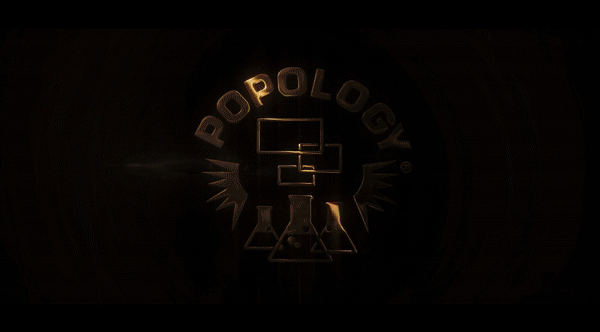- Joe Rey

- Jul 6
- 4 min read
This POPOLOGY Toy Spotlight focuses on a true legend in the action figure industry, and an item that many kids had from the 1970’s. When Mego launched their Star Trek toy line in 1974, it was an instant hit. The first wave of items included a few action figures, accessories and one gloriously fun playset. That playset, made for the 8 inch figures, is now considered a iconic toy classic. So without further ado,
… as proud 1st POPOLOGIST I present Mego’s U.S.S Enterprise Playset from 1974.

By 1974, Mego Toys was quickly becoming a global name in the toy industry. With the World’s Greatest Heroes line already proving to be a huge success, Mego turned their sights on other licenses from the the big and small screens. The original Star Trek television series ran from 1966 to 1969 and spanned 79 episodes. In late 1969, Star Trek began running syndicated episodes in over 200 markets, which sparked a huge revival of interest in the show.
Star Trek became so big, the original actors returned to voice their characters in an Animated Series from 1973 to 1974. Mego took notice of this, and quickly signed Star Trek to a licensing deal for a very reasonable price. Mego had high hopes for the line from the very beginning, and their attention to detail really showed with the first wave of figures and accessories.
Since Star Trek Mania was at a fevered pitch, the Star Trek action figure series turned out to be one of the biggest selling lines that Mego ever produced. It did well enough that additional waves of figures and accessories were released in following years.
The first wave of Star Trek items included five action figures, and a few roleplay accessories such as the Communicator set, a Tricorder, and of course, the Enterprise playset.
The Enterprise was arguably the most successful and best selling playset that Mego had ever created, depending on who you ask. It was available in abundance due to massive production numbers by Mego, but you can’t really blame them. Despite the large production runs, it still sold extremely well.

The U.S.S Enterprise Action playset was the first one released for the Star Trek line, and would go on to become an icon of that era of toys. The playset itself was not incredibly accurate to the actual bridge from the Enterprise, but it definitely captured the spirit of it, and it was just plain fun.
The Enterprise playset itself could be folded up into a neat and tidy carry case, complete with a handle on top. The set included a computer console with two crew member stools and of course, the captain’s chair. Also included were three different two-sided viewer screens that could be manually changed out. The Enterprise set was basically broken down into three different areas of the ship. The main part was of course, the bridge. This is where you could set up the computer and chairs, along with the view screens. This was the largest area, and could easily accommodate several Star Trek figures. There was a small room to the right of the bridge, which is identified as the “Engine Room”, but has no accessories.
The final section of the playset also happens to be the absolute coolest part of it, the transporter room. A figure would be placed inside the transporter, and then you would spin it by using the spin button on top of it. Then you mash the stop button, and the transporter would come to a sudden stop. Just like that, the figure would disappear…..….or at least be on the other side of the transporter.

A “Gift Set” version of the Enterprise also exists, and came in a yellow box.
The Gift Set is basically identical to the regular version, but includes the first five figures (Kirk, Spock, McCoy, Scottie, Klingon), and that’s about it. A separate “Transporter Room” was also offered overseas by the Mego subsidiary, Palitoy. This was essentially the same transporter as the one inside the playset, but sold separately. It was actually a nifty piece to have, especially when you wanted to re-create “transporting” from the Enterprise to a planet surface or another ship.
Mego’s U.S.S Enterprise Playset was a huge hit back in the mid 1970’s, and is highly coveted by collectors nowadays. There were a LOT of these sold back in the day, which obviously affects the secondary market value.

The good news is that any collector of Mego or Star Trek needs one of these in their collection. It remains extremely poplar on the secondary market, and still brings good prices. Loose versions of the Enterprise playset can be easily found, and usually sell for affordable prices. Boxed versions can also still be found, but are getting harder and harder to find in a decent shape. Mego really set the bar high for future playsets, and the Enterprise is genuinely considered an all-time classic.
Mego’s USS Enterprise remains the gold standard for what a successful action figure playset looks like. Despite its simplicity, it worked really well, and provided hours of entertainment for children (our POPOLOGY Founder included) from that era. It still holds up extremely well, and if you don’t believe me, just ask kids who loved making their more modern action figures disappear in the transporter room while playing with it.
A big thank you goes out to Mego for their creative ingenuity in putting this classic together and shaping an incredible era of toys.























%20NEW-03.png)







